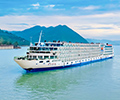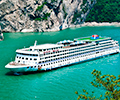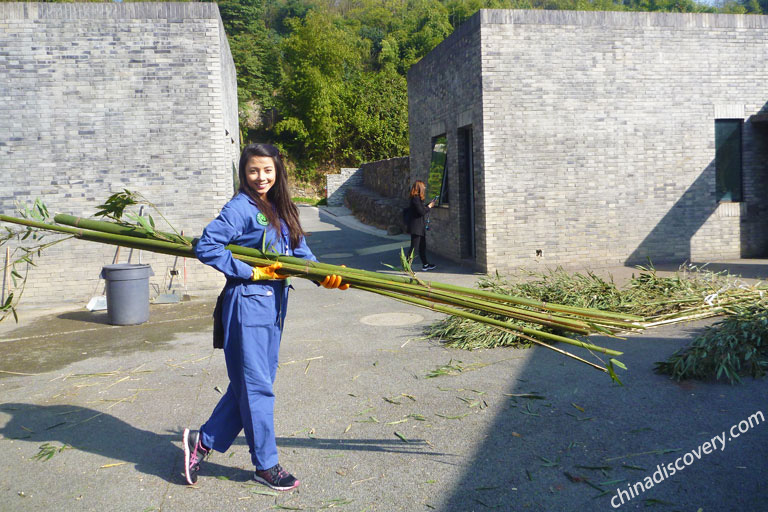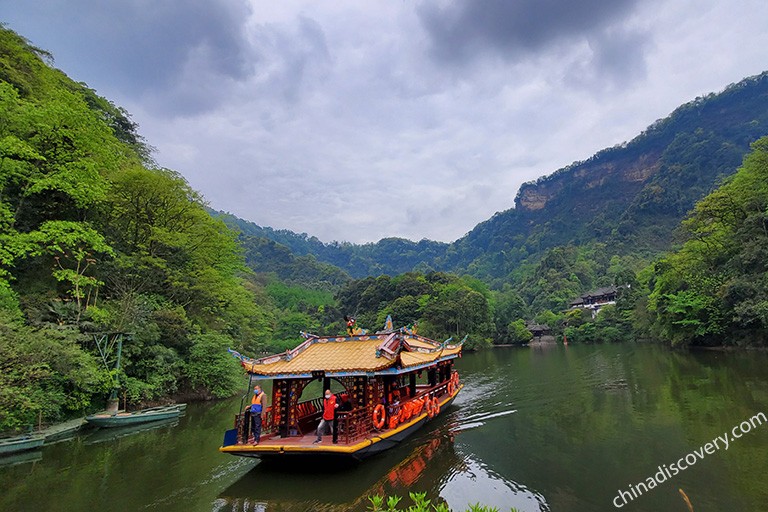Zeva's 1 Day Ancient Irrigation System Tour in Dujiangyan
-
Departure Date2020-07-11
-
Travel Length1 Day
-
Travel ThemeNature, Culture, History, Family, Group
-
Group Size6
-
Travel RouteChengdu - Dujiangyan - Chengdu
-
HighlightsDujiangyan Irrigation System (South Bridge, West Street, Erwang Temple, Anlan Bridge, Yuzui Dike, Feisha Weir, Baopingkou)
Dujiangyan is a place where be familiar to me. Ever since I was a child I come and visit here from time to time. After the rebuilt of Wenchuan Earthquake in 2008, Dujiangyan has injected with new vitality that this place is attracting more tourists than before. After the quarantine policy been lifted, we are here again.
Our Day Tour Itinerary in Dujiangyan Irrigation System
South Bridge is located on the Inner River of Minjiang River below the Baopingkou in Dujiangyan. It is a majestic and magnificent ancient corridor bridge between South Street and Fuxing Street, you will see it standing on the right side of the entrance of Dujiangyan Scenic Area. In the history, it has been damaged many times. In the last renovation of the South Bridge, various colored paintings, carved beams and paintings, folk colored sculptures, paintings and calligraphy are combined together. Nowadays it is known as the "Water Painting Building" and "The first place in Jiangyuan". Standing on the bridge, you can see the clear water separated from Mingjiang River, and Baopingkou is just in front of us.
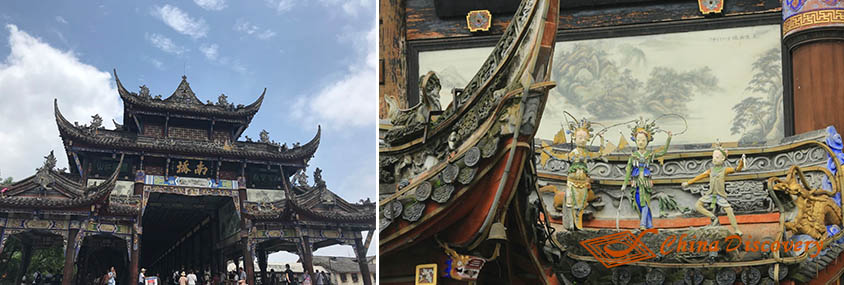
Symbolic South Bridge with Painted Sculptures
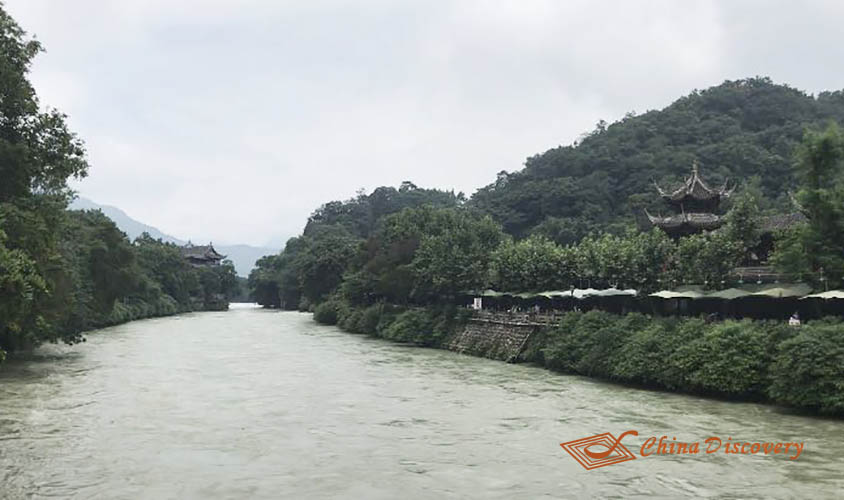
Green Water Flowing in Mingjiang River
Cross the South Bridge, we arrived in West Street on Guan County. Guan County was the ancient name of Dujiangyan, and it always come up together with West Street when people talk about it. West Street is a long narrow alley occupied by all kinds of shops and restaurants; most visitors who came to Dujiangyan will choose to have their lunch here. At one end of West Street, there are stone reliefs describing the way people made a living in ancient times.
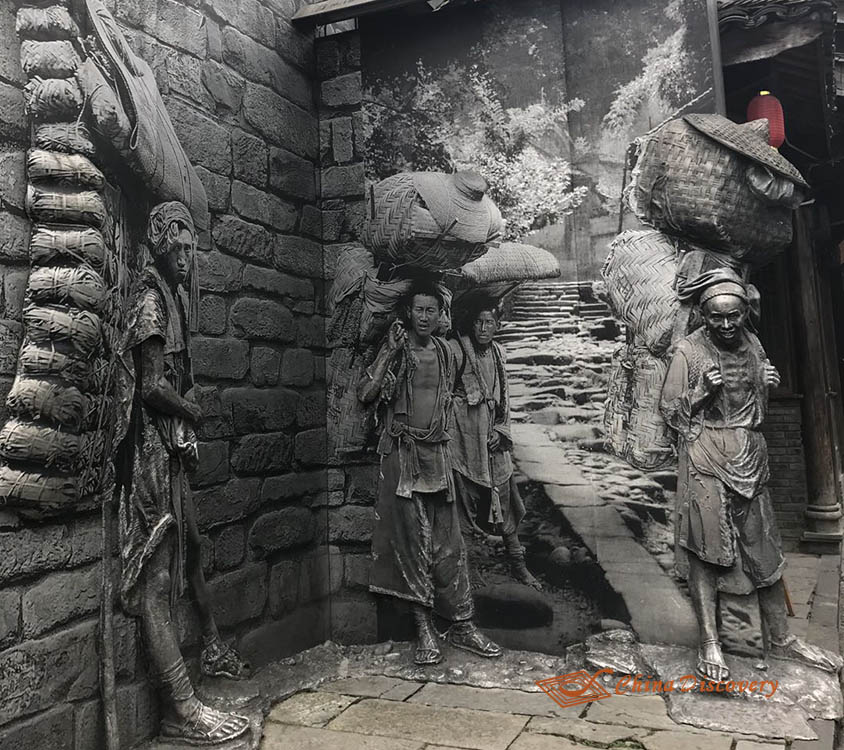
Sculptures Presenting Local Living in West Street
On the other side, there’re some traditional snacks selling and showing, such as the sugar painting. Sugar painting is a traditional folk handicraft that uses sugar as a material for modeling. The production process is very interesting. The folk artist scoops up the melted sugar juice with a small spoon, casts it back and forth quickly on the stone slab, and draws the shape. After completion, he immediately scoops up the sugar painting with a small spatula and sticks the bamboo stick. Another fun part is that consumers, whom mostly are kinds, will choose their sugar panting image by a rotary table. There are all kinds of zodiac images on the rotary table, and what image you will pick up is totally for random. It’s nice to spend some leisure time there.
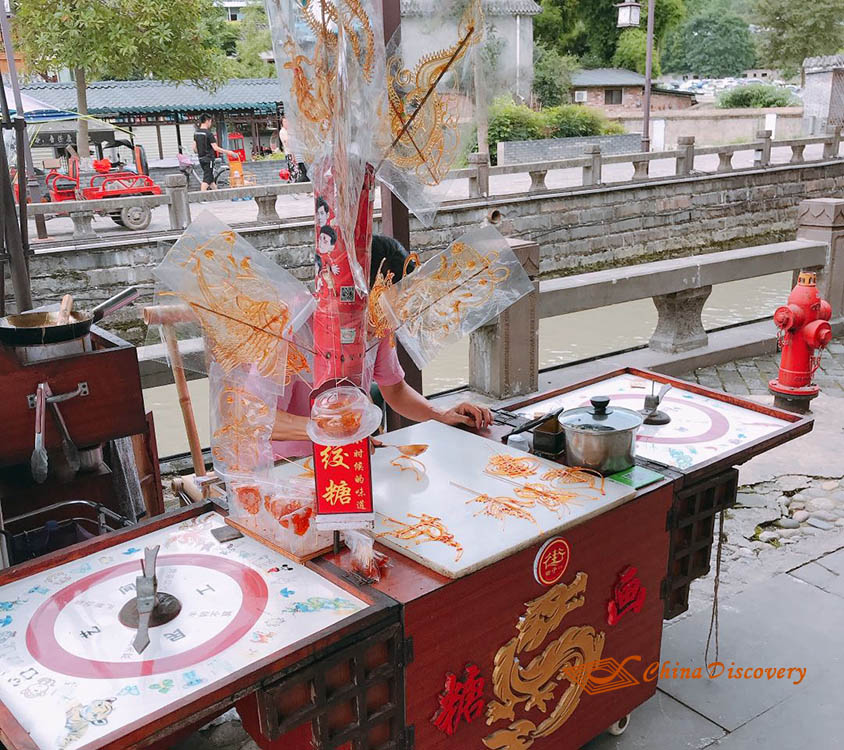
Sugar Painting is a Traditional Folk Handicraft
After a short stroll, we head to the Erwang Temple, the place people built to commemorate the Li Bing and his son, the builders of Dujiangyan Water Conservancy Project. Usually, temples in ancient China went through the process of building, destroying, and rebuilding, finally meet us after experiencing the baptism of war and the changes of times. So it is with Erwang Temple. This temple was originally used to commemorate Du Yu, the King of Shu, and was called Wangdi Temple. After Wangdi Temple being moved to Pixian at Southern and Northern Dynasties, people built another temple to commemorate Li Bing and his son on the same site. That was named Chongde Temple at that time. In Song Dynasty, the governor started to call it Erwang Temple in the local official log. The "Erwang Temple" has undergone many reconstructions and repairs, and now it basically maintains the style of the Qing Dynasty. The most recent reconstruction was an emergency repair and reconstruction after the Wenchuan earthquake in 2008. This tour is also the first return visit after the reconstruction of Dujiangyan after the Wenchuan earthquake. The temple itself still remains it structure, and some damaged parts has been repaired harmoniously with similar materials.
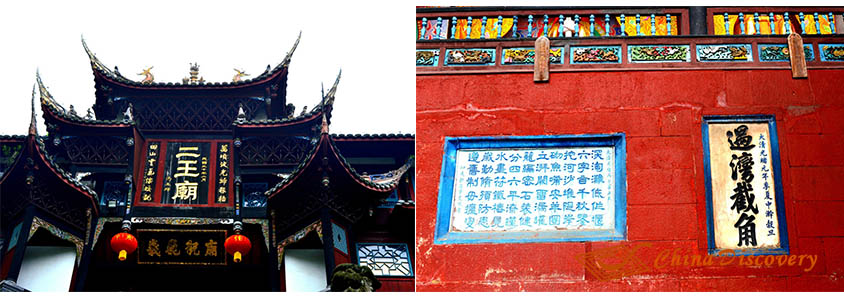
Eryang Temple Built for Li Bing and His Son
Next is the Anlan Bridge, on the bridge you can see a clear picture of Dujiangyan water conservancy project, Yuzui water-dividing dike, Feisha weir and Baopingkou water inlet. Yuzui Dike has divided Minjiang River into two parts, the Inner river and Outer river. Feisha weir plays the role of sedimentation, and in the end, the clear water pass Baopingkou and runs into the inner irrigation system of Chengdu plain farmlands. These three parts of construction did amazing job to control the flood and irrigate farmland, and the function has continued since two thousand years ago. Anlan Bridge is about 500 meters long, it was built before Song Dynasty by a generous couple who helped people to cross the Mingjiang River. The cable bridge was originally supported by wooden rows and stone piers, and the river surface was hung horizontally with thick bamboo cables. After destroyed by was at late Ming Dynasty, Anlan Bridge was reconstructed several times. Now we can see the cable bridge supported by steel cables and concrete piles, visitors can stand on this swaying but stable bridge to explore the whole structure of Dujiangyan water-conservation project.
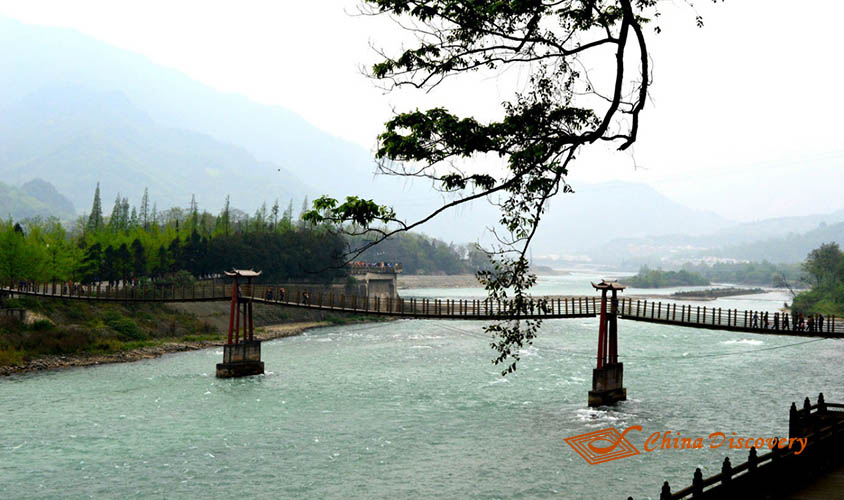
Anlan Bridge - One of the Five Famous Ancient Bridges
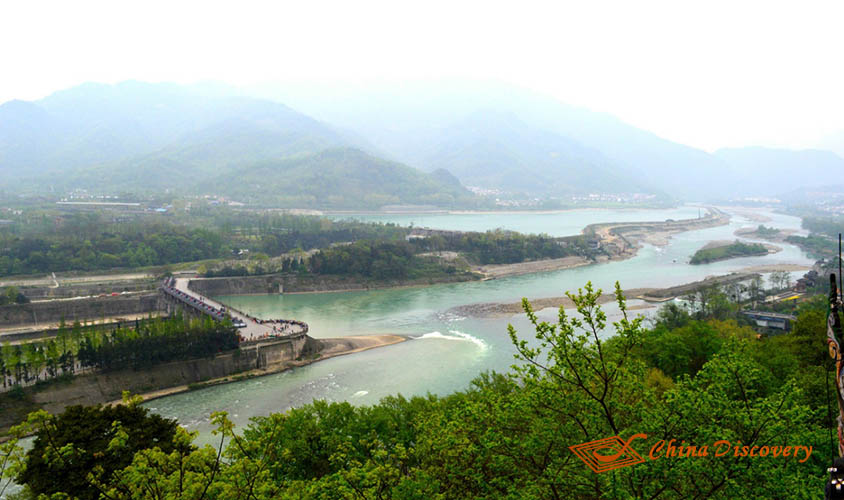
Yuzui Dike of Dujiangyan Irrigation System
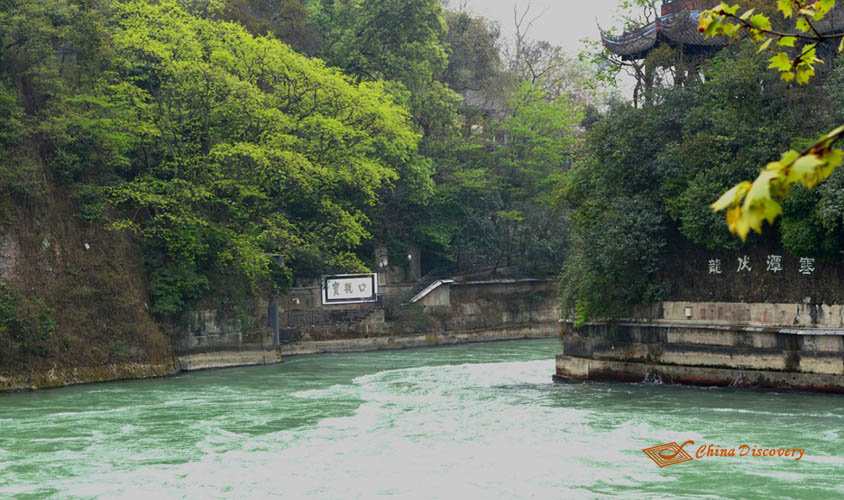
Baopingkou Serves as River Stream Brake

Tourist Map of Dujiangyan Scenic Area
Tour Ends
Hi, I'm Zeva. Are you interested in my Dujiang day trip from Chengdu? Feel free to contact me, and I will be glad to tell you more stunning stories about the places I have visited. Or, if you want to customize a tour on your own, I'm always ready to help at any time. With my passion, knowledge and understanding of the essence of travel, I promise I will try my best to make the tour memorable and meaningful for you.
- Zeva
- Travel Consultant
- E-mail me now!

Recommended Tours
Top 3 tours chosen by most customers to explore in the best way. Check the detailed itinerary, or tailor your own trip now with us.

1 Day Dujiangyan Panda Volunteer Tour
Dujiangyan

1 Day Dujiangyan & Mount Qingcheng World Heritage Tour
Chengdu / Dujiangyan / Chengdu

1 Day Panda Tour with Mount Qingcheng
Dujiangyan
Have a question? Get answers from our travel experts or guests
- Your Question:
- Your Name:
- Your Email:
- Submit













